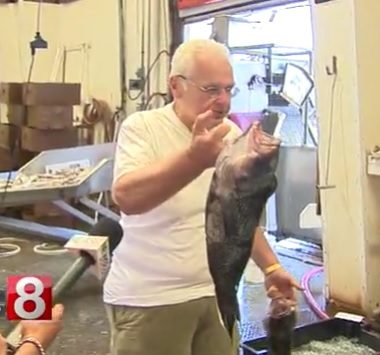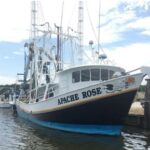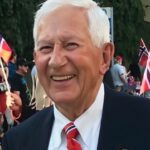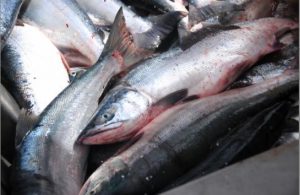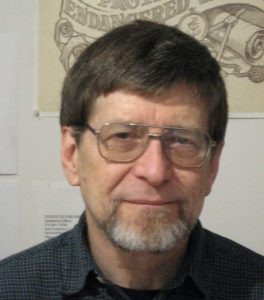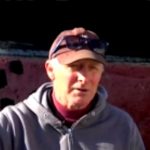Search Results for: Wave Energy
Wave Energy: Big waves off Oregon coast fuel cutting-edge effort to harness the ocean for electricity
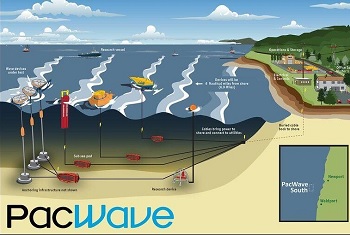 The effort is different from the contentious offshore wind leases planned along the southern Oregon coast. The wave test site is experimental, has a smaller footprint and could directly benefit coastal economies. It also was developed with community input, winning local support. “Wave energy is incredibly attractive as a future renewable power source,” said Bryson Robertson, director of the Pacific Marine Energy Center at Oregon State University. (more project links) “Not only is it capable of generating power close to where we need it, but it can generate it at the time we need it and we can predict it. Which is very useful and powerful for meeting consumer demand.” “It’s different from wind and solar because wave energy just keeps going and going,” Hales said. “It’s more reliable. It could become an essential part of a diversified energy portfolio.” more, >>CLICK TO READ<< 09:39
The effort is different from the contentious offshore wind leases planned along the southern Oregon coast. The wave test site is experimental, has a smaller footprint and could directly benefit coastal economies. It also was developed with community input, winning local support. “Wave energy is incredibly attractive as a future renewable power source,” said Bryson Robertson, director of the Pacific Marine Energy Center at Oregon State University. (more project links) “Not only is it capable of generating power close to where we need it, but it can generate it at the time we need it and we can predict it. Which is very useful and powerful for meeting consumer demand.” “It’s different from wind and solar because wave energy just keeps going and going,” Hales said. “It’s more reliable. It could become an essential part of a diversified energy portfolio.” more, >>CLICK TO READ<< 09:39

Initial work is being done at the OSU Oregon Coast Wave Energy Project test site
Initial work is being done on the OSU PacWave South wave energy test site, with the onshore components being connected to the offshore facility in this spot. There are two areas off the central Oregon coast where the PacWave testing will be done. Near Waldport is the southern spot, while another near Newport is the northern rigging. The work being done here includes horizontal directional drilling deep beneath the park and ocean shore. Later subsea cable installation work will primarily be between 1 and 7 miles offshore. PacWave South is the first marine renewable energy research lease the Bureau of Ocean Energy Management has issued in federal waters off the West Coast.,, Five power and data cables buried below the seafloor will connect the ocean test site to a shoreside facility southeast of Seal Rock. >click to read<, with links to hearings/meetings 10:23

Federal lease allows Oregon State’s offshore wave energy testing facility to move ahead in 2021
The lease for PacWave South is the first marine renewable energy research lease the Bureau of Ocean Energy Management has issued in federal waters off the West Coast. The estimated $80 million facility will be located offshore southwest of Newport, Oregon. The project still must receive licensing approval from the Federal Energy Regulatory Commission before it can move forward. Obtaining the lease is an essential component of the licensing requirements. >click to read< 12:22
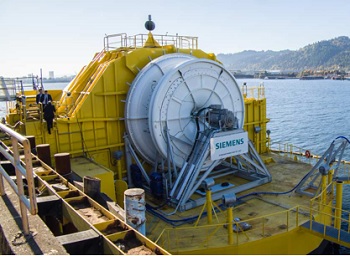
Wave Energy Tech Is Ready to Plug Into a Real Grid
In Hawaii, the OceanEnergy Buoy is slated to connect to the island of Oahu’s electric grid next month. The 749-metric-ton device was recently towed from Portland, Ore., to the U.S. Navy’s Wave Energy Test Site, where the bright yellow buoy will undergo a year of performance tests. The project builds on a decade of research and several smaller iterations, including a quarter-scale model that was tested for three years in Ireland’s Galway Bay. >click to read< 08:22
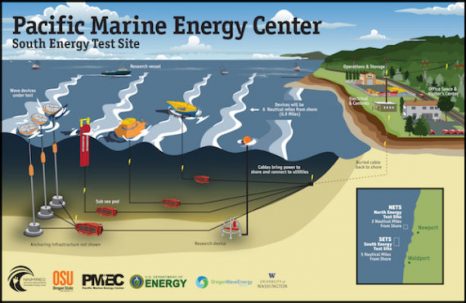
US Doubles Down On Wave Energy, $40 Mil For New Test Bed
It looks like the US is about to get much, much more serious about developing its vast wave energy potential. Researchers have been working at several relatively modest sites in Hawaii and the Pacific Northwest, and now the Energy Department has announced funding for a new, $40 million utility scale test site in the waters of the continental US, off the coast of Oregon. The new wave energy test site will be built and operated under the auspices of Oregon State University’s Northwest National Marine Renewable Energy Center. In a press release announcing the plan to invest up to $40 million in the nation’s first utility scale wave energy test site, the Energy Department noted that more than half of the population of the US lives within 50 miles of a coastline. All things being equal, coastal populations are expected to grow, but getting zero emission energy to coastal regions is becoming more complex and difficult. Aging coastal nuclear power plants will most likely not be replaced, and population density limits the potential for utility scale wind farms and solar arrays on land. Another limitation for land-based renewable energy in coastal areas is the need for new long distance transmission lines. Plans have been in place for years to bring wind power from the wind rich midwest to points east, but the new lines have had to battle against fossil fuel interests as well as local stakeholders. One solution is to tap the waters of the US coastlines. Read the rest here 12:40
Oregon wave energy stalls off the coast of Reedsport

Last September, with great fanfare, Ocean Power Technologies began construction on America’s first wave-powered utility. Holding the first – and only – wave energy permit from the Federal Energy Regulatory Commission, OPT had planned to deploy a test buoy off the by spring. But a year after the permit, regulatory and technical difficulties have all but halted the project. Federal regulators notified the company earlier this year it had violated the license after failing to file a variety of plans and assessments. All that remains in the water are pieces of a single anchoring system on the ocean floor. State officials have told the New Jersey company to remove them by month’s end. more@oregonlive 19:46
Oregon – Wave energy a travesty of governmental process
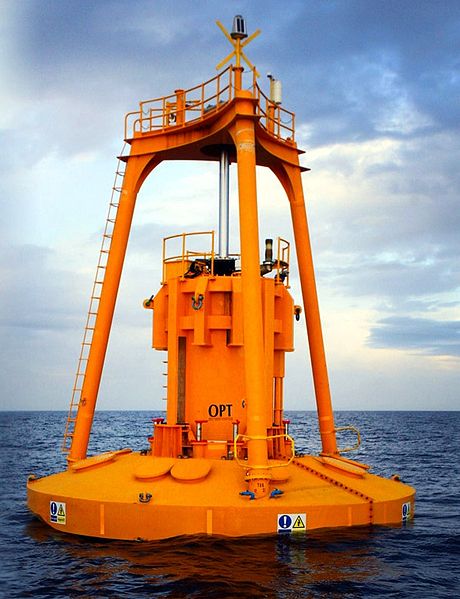 Three former Oregon State University undergrads have already received more than a half-million bucks in public money to build a wave energy facility near the Nestucca River north of Lincoln City. That’s why Oregon’s Department of Land Conservation and Development rammed the site through the Territorial Sea Plan process: The expenditures needed a justification. Read more here
Three former Oregon State University undergrads have already received more than a half-million bucks in public money to build a wave energy facility near the Nestucca River north of Lincoln City. That’s why Oregon’s Department of Land Conservation and Development rammed the site through the Territorial Sea Plan process: The expenditures needed a justification. Read more here
LCDC votes to keep Pacific City on wave energy development list
 “It was the biggest travesty of justice I’ve seen – including 26 years in the Legislature,” Paul Hanneman told the Headlight Herald. Hanneman, a former state legislator and former Tillamook County commissioner, is currently active in the Pacific City Dorymen’s Association, which opposed wave energy development off Pacific City and Neskowin. Read more
“It was the biggest travesty of justice I’ve seen – including 26 years in the Legislature,” Paul Hanneman told the Headlight Herald. Hanneman, a former state legislator and former Tillamook County commissioner, is currently active in the Pacific City Dorymen’s Association, which opposed wave energy development off Pacific City and Neskowin. Read more
Oregon wave energy plan ready for vote after four years of work
“It was a painful process,” said Josi. “Fishermen were the primary controversy … having to tell where their best sites are, and not only that, but having to give up fishing grounds. No matter what you do there is going to be one fishery or another hurt. People who live shore side don’t want to look at these facilities. People who use the ocean for recreation want to make sure their playgrounds are protected. We had to develop standards for all of those.” Read more
Divvying up more sea floor for possible future wave energy devices riles commercial fishermen at TSP meeting in Newport.
Territorial Sea Plan Meeting Oregon Coast Community College, Friday Oregon Coast commercial and sport fishermen were not a happy group all day Friday as they were pressured to give up more valuable fishing areas to accommodate future wave energy devices, many of which are not yet fully designed, manufactured or tested. In fact if these devises ever show up off the Oregon Coast they are likely to require,,,,,,,Read more http://www.newslincolncounty.com/?p=66562
Blue power: Will ocean waves be California’s new source of clean energy?
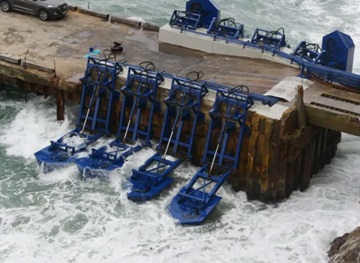 The world’s oceans may be vast, but they are getting crowded. Coastal areas are congested with cargo ships, international commercial fishing fleets, naval vessels, oil rigs and, soon, floating platforms for deep-sea mining. But the Pacific Ocean is going to get even busier: Nearly 600 square miles of ocean off California have been leased for floating wind farms, with more expected. Now the state is considering hosting another renewable energy technology in the sea: Blue power, electricity created from waves and tides. A new law signed by Gov. Gavin Newsom in October instructs state agencies to study the feasibility and impacts of capturing ocean movement to create power and report back to the Legislature by January 2025. more , >>click to read<<07:20
The world’s oceans may be vast, but they are getting crowded. Coastal areas are congested with cargo ships, international commercial fishing fleets, naval vessels, oil rigs and, soon, floating platforms for deep-sea mining. But the Pacific Ocean is going to get even busier: Nearly 600 square miles of ocean off California have been leased for floating wind farms, with more expected. Now the state is considering hosting another renewable energy technology in the sea: Blue power, electricity created from waves and tides. A new law signed by Gov. Gavin Newsom in October instructs state agencies to study the feasibility and impacts of capturing ocean movement to create power and report back to the Legislature by January 2025. more , >>click to read<<07:20
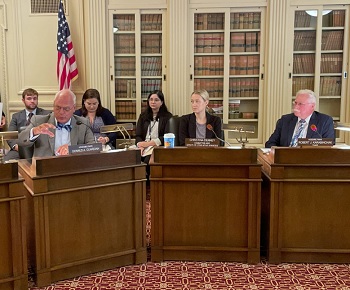
“It’s a step too far for us” – New Jersey lawmakers advance bill to study energy from waves and tides
When it comes to renewable energy, solar power and wind turbines hog all the headlines. Thursday, legislators advanced Assemblyman Robert Karabinchak’s bill that would require the state to study ocean energy potential and set goals in wave and tidal energy generation. The Assembly’s infrastructure and natural resources committee, which Karabinchak chairs, unanimously agreed to advance the bill, which would also require the state to add wave and tidal energy to its energy master plan and authorize pilot projects to test their efficacy. The approval came despite objections from an advocate for commercial fisheries, who warned the “industrialization of our ocean” — already underway with offshore wind projects — will obliterate fishing grounds. “We will not be able to fish in these locations,” said Scot C. Mackey, who represented the Garden State Seafood Association. >click to read< 08:16
Big step for Oregon wave demo of hydrokinetic energy test project
 A 20MW wave-energy test project off Oregon has cleared another permitting hurdle. The US Bureau of Ocean Energy Management today said it is appropriate to issue a lease on a non-competitive basis for the site offshore Newport.,, 33-square mile area about four miles offshore, where water depths range from 180 to 230 feet. Read more here 09:46
A 20MW wave-energy test project off Oregon has cleared another permitting hurdle. The US Bureau of Ocean Energy Management today said it is appropriate to issue a lease on a non-competitive basis for the site offshore Newport.,, 33-square mile area about four miles offshore, where water depths range from 180 to 230 feet. Read more here 09:46
Oppose Offshore Wind/Industrialization: California, catch the next big energy wave!
 The first U.S. offshore wind turbine hooked into the U.S. power grid in June, but not in the “green” state of California. It happened on the opposite side of the continent, off the coast of Maine, using a floating wind-generator prototype well suited for the deep ocean water typically found off the coast of California. David Helvarg is the executive director of Blue Frontier, an ocean conservation group. continued@latimes
The first U.S. offshore wind turbine hooked into the U.S. power grid in June, but not in the “green” state of California. It happened on the opposite side of the continent, off the coast of Maine, using a floating wind-generator prototype well suited for the deep ocean water typically found off the coast of California. David Helvarg is the executive director of Blue Frontier, an ocean conservation group. continued@latimes
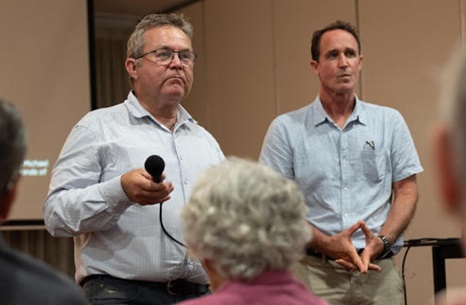
The anti-windfarm ‘odd couple’ joining forces to fight the renewable energy projects Australia’s already failing to build
Deep in coal country, a lifelong environmentalist and one-time Greens candidate is feeling the applause. It’s Thursday night at a Gladstone pub and Steven Nowakowski has won over sceptical locals. His message is a simple one; he believes a wave of new windfarm developments threatens to smash hilltops and turn koala habitat into “industrial zones”. The green movement, he says, are in “la-la land” over windfarms, a comment that draws nods and knowing smiles from the audience. But its only when one local suggests building a new coal-fired power station does the crowd erupt in spontaneous applause. more, >>CLICK TO READ<< 08:59
Energy giant pays off fisherman blocking Wicklow wind farm
 A fisherman from Co Wicklow has settled with an offshore wind developer in a landmark case expected to send waves through a renewable energy industry grappling with mounting legal challenges. Last May, Ivan Toole, whose fishing company operates out of Greystones, brought a judicial review on environmental grounds against the minister of state with responsibility for planning and local government over the granting of a foreshore licence to RWE, a German energy group and notice party in the case. The licence granted RWE the right to survey a section of sea off the east coast before applying for planning permission for its €1.5 billion offshore wind farm. more, >>CLICK TO READ<< 09:21
A fisherman from Co Wicklow has settled with an offshore wind developer in a landmark case expected to send waves through a renewable energy industry grappling with mounting legal challenges. Last May, Ivan Toole, whose fishing company operates out of Greystones, brought a judicial review on environmental grounds against the minister of state with responsibility for planning and local government over the granting of a foreshore licence to RWE, a German energy group and notice party in the case. The licence granted RWE the right to survey a section of sea off the east coast before applying for planning permission for its €1.5 billion offshore wind farm. more, >>CLICK TO READ<< 09:21
Study of seismic testing used in offshore oil, gas and wind energy industries finds lobsters ‘concussed’
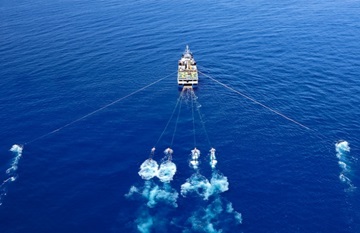 Seismic testing critical to Western Australia’s offshore oil, gas and energy industries is dazing, and potentially killing the state’s valuable western rock lobsters, a new study has found. The practice is essential to offshore oil and gas exploration and the construction of wind turbines, and involves firing powerful air guns, creating soundwaves that penetrate the ocean floor. But research by the WA government’s Department of Primary Industries and Regional Development has found lobsters exposed to the testing are significantly impacted. Offshore crustaceans scientist Simon de Lestang studied the behaviour of lobsters after they were exposed to seismic testing conducted offshore, in shallow water south of Geraldton. >>click to read<< 11:05
Seismic testing critical to Western Australia’s offshore oil, gas and energy industries is dazing, and potentially killing the state’s valuable western rock lobsters, a new study has found. The practice is essential to offshore oil and gas exploration and the construction of wind turbines, and involves firing powerful air guns, creating soundwaves that penetrate the ocean floor. But research by the WA government’s Department of Primary Industries and Regional Development has found lobsters exposed to the testing are significantly impacted. Offshore crustaceans scientist Simon de Lestang studied the behaviour of lobsters after they were exposed to seismic testing conducted offshore, in shallow water south of Geraldton. >>click to read<< 11:05
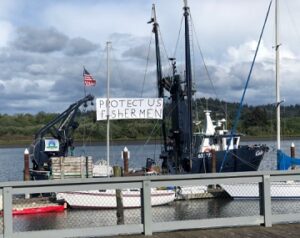
Oregon Senators, Governor responds to offshore wind farms concerns during clean energy tour
During a clean energy tour of Oregon, KATU questioned the US Secretary of Energy, Jennifer Granholm, Oregon Senators Ron Wyden, Jeff Merkley and Governor Kate Brown on issues surrounding wind farms slated for the Southern Oregon Coast. “It’s too early honestly we don’t know it’s a lot like the wave energy technology it’s still being built it’s still being created,” said Oregon Gov. Kate Brown when asked if she would advocate funding for preliminary wind farm testing ahead of federal leases planed for Southern Oregon offshore areas. “We really need to understand all of the impacts upfront before we rush into this,” said Heather Mann Executive Director of the Midwater Trawlers’ cooperative. >click to read< 09:56
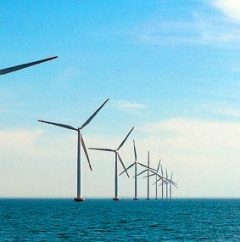
Study: offshore renewable energy installations rough on marine life
Researchers suggest that if marine renewable energy devices (MREDs) – such as wave energy converters and wind turbines – are placed in marine environments without consideration of environmental consequences, marine life could be severely damaged. That stands in stark contrast to the environmentally friendly mindset that drives such devices in the first place. The study insists that these energy devices can greatly advance climate goals but cautions that greater thought must be given to when, where and how they are implemented. >click to read< 12:41
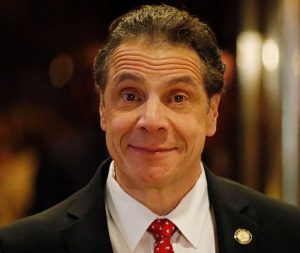
The Giga and Terra Scam of Offshore Wind Energy
Can anti-fossil fuel policies based on climate crisis alarmism possibly get any more insane than this?,, Wind “farms”? Like some cute, rustic Old McDonald family farm? Are you kidding me? These would be massive offshore electricity factories, with thousands, even millions, of turbines and blades towering 500-700 feet above the waves. Only a certifiable lunatic, congenital liar, complete true believer, would-be global overseer or campaign-cash-hungry politician could possibly repeat this IEA hype – or call these wind energy factories renewable, sustainable or eco-friendly. >click to read< 09:25
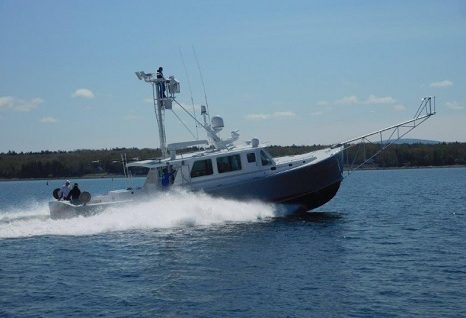
Backstabber hopes to make waves on tournament fishing circuit
Boatbuilder Steve Wessel seemed relaxed last week, at least by his usual high-energy standard, as he showed Backstabber, the latest creation from Wesmac Custom Boats, to a pair of enthralled sportsmen. He had a lot to be relaxed about.,,,Backstabber is a big boat, 54 feet long overall with a beam of 17 feet 6 inches and a 6-foot draft. With a cored superstructure, and solid fiberglass hull, her design displacement is 54,000 pounds. A boat that heavy needs plenty of power if it’s going to go after big fish and Backstabber has it. >click to read<11:55
Hurricane-force winds out of the Gulf of Alaska sent huge waves traveling down the West Coast
 Like a gigantic pinwheel, an intense 965-millibar storm with hurricane-force winds in the Gulf of Alaska last week moved into the Pacific Northwest. These winds blew for more than 36 hours over a wind fetch — the distance the wind blew over water — that exceeded 400 nautical miles. The friction between the wind and the ocean’s surface generated 48-foot seas. The greater the wind speed, the higher the waves. When these high seas moved out from under the winds, they became longer-period swells. By late Wednesday night,,, Read the article here 09:06
Like a gigantic pinwheel, an intense 965-millibar storm with hurricane-force winds in the Gulf of Alaska last week moved into the Pacific Northwest. These winds blew for more than 36 hours over a wind fetch — the distance the wind blew over water — that exceeded 400 nautical miles. The friction between the wind and the ocean’s surface generated 48-foot seas. The greater the wind speed, the higher the waves. When these high seas moved out from under the winds, they became longer-period swells. By late Wednesday night,,, Read the article here 09:06
Morro Bay officials oppose Dynegy wave parks – “they just ignored everything the fishermen said,”
 Morro Bay city councilmembers voiced unanimous opposition to two proposed wave-power-generation facilities off the coast. “It looks to me, in the proposal … that they just ignored everything the fishermen said,” Councilwoman Nancy Johnson said of Dynegy’s permit application with the Federal Energy Regulatory Commission (FERC) for wave parks in Estero Bay and off Point Estero. Read the rest here 09:16
Morro Bay city councilmembers voiced unanimous opposition to two proposed wave-power-generation facilities off the coast. “It looks to me, in the proposal … that they just ignored everything the fishermen said,” Councilwoman Nancy Johnson said of Dynegy’s permit application with the Federal Energy Regulatory Commission (FERC) for wave parks in Estero Bay and off Point Estero. Read the rest here 09:16
How the US coast guard made an unsinkable boat
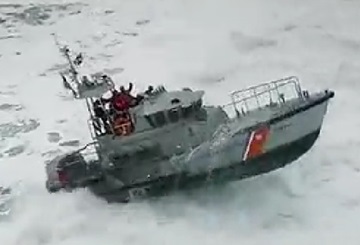 Introducing the remarkable 47-foot Motor Lifeboat (47 MLB), an unsinkable marvel exclusively operated by the United States Coast Guard. This vessel’s self-righting ability is a testament to naval engineering, with a low center of gravity, high buoyancy, and watertight integrity that defy the odds of capsizing. The dedicated surfmen, after six years of rigorous training, navigate treacherous waves with precision, employing techniques to outrun, dodge, and absorb wave energy, ensuring safety during rescue missions. Despite the challenges of time, efforts are underway to extend the operational lifespan of these unsinkable heroes, a symbol of resilience and unwavering dedication to maritime safety. Video, >>click to read<< 16:47
Introducing the remarkable 47-foot Motor Lifeboat (47 MLB), an unsinkable marvel exclusively operated by the United States Coast Guard. This vessel’s self-righting ability is a testament to naval engineering, with a low center of gravity, high buoyancy, and watertight integrity that defy the odds of capsizing. The dedicated surfmen, after six years of rigorous training, navigate treacherous waves with precision, employing techniques to outrun, dodge, and absorb wave energy, ensuring safety during rescue missions. Despite the challenges of time, efforts are underway to extend the operational lifespan of these unsinkable heroes, a symbol of resilience and unwavering dedication to maritime safety. Video, >>click to read<< 16:47
Retired Commercial Fisherman Mark Lee Roberts of Tillamook, Oregon, has passed away
 After a long battle with cancer, we lost our beloved husband, father, grandfather, great-grandfather and friend, Mark Lee Roberts. Mark was born in Portland, Oregon in 1952 to Harley and Irene Roberts. Mark grew up in SW Portland and attended St. Clare’s Catholic School and graduated from Central Catholic H.S. in 1970. He started commercial dory fishing with his father out of Pacific City in the Old Soak and Ragtag. He owned several dories including Shark Bait, Fish Assassin and Accomplice before acquiring a larger boat, the Pacific Mistress, which he commercial fished out of Depoe Bay. Mark was also part of the ODFW Marine Reserves Community Team, the Depoe Bay Near Shore Action Team, OSU Wave Energy participant, Oregon Dungeness Crab Commission member, and a longtime member of the Pacific City Dorymen’s Association. >>click to read<< 14:49
After a long battle with cancer, we lost our beloved husband, father, grandfather, great-grandfather and friend, Mark Lee Roberts. Mark was born in Portland, Oregon in 1952 to Harley and Irene Roberts. Mark grew up in SW Portland and attended St. Clare’s Catholic School and graduated from Central Catholic H.S. in 1970. He started commercial dory fishing with his father out of Pacific City in the Old Soak and Ragtag. He owned several dories including Shark Bait, Fish Assassin and Accomplice before acquiring a larger boat, the Pacific Mistress, which he commercial fished out of Depoe Bay. Mark was also part of the ODFW Marine Reserves Community Team, the Depoe Bay Near Shore Action Team, OSU Wave Energy participant, Oregon Dungeness Crab Commission member, and a longtime member of the Pacific City Dorymen’s Association. >>click to read<< 14:49
Pacific Council says Rescind Oregon OSW Call Areas
 For Immediate Release
For Immediate Release
March 9, 2023
Pacific Council says rescind Oregon OSW call areas
The Pacific Fishery Management Council (Council) acted today to join a chorus of voices recommending the Bureau of Ocean Energy Management (BOEM) rescind the current Oregon call areas designated for floating offshore wind energy development.
The Council also recommended BOEM start the siting process over using a spatial mapping tool focused on identifying deconflicted areas suitable for wind energy development. Instead of using this approach to consider appropriate areas along the entirety of the Oregon coast, BOEM has been using the mapping tool only to analyze the call areas identified last year. Members of the fishing industry, environmental groups, tribes, and several of the Council’s advisory bodies provided testimony to the Council supporting a more widespread use of the mapping tool. The motion also included sending the same letter to Oregon’s new Governor, Tina Kotek.
“The Council’s action sends a strong signal to BOEM that fisheries leaders do not want to risk losing our productive fisheries, the scientific surveys on which our fisheries management depends, or the health of our ocean ecosystems due to offshore wind,” WCSPA Deputy Director and Co-Chair of the Council’s Marine Planning Committee Susan Chambers said. “The California Current is one of the most productive ecosystems in the world. We need to get this right.”
Seven Council advisory bodies provided detailed statements voicing concerns about the current process, with several bodies calling to rescind the current Oregon call areas. These advisory body statements were buoyed by oral public comment from 10 organizations and businesses, including the environmental organization, Oceana, as well as individual fishing businesses and fishing trade associations.
Heather Mann, Executive Director of the Midwater Trawlers Cooperative and one of the leaders of the informal coalition Protect US Fishermen said in her testimony, “we hear the climate crisis is so severe that collateral damage to birds, whales, the California current ecosystem, food security, even to fisheries, fishermen and rural community economies is an accepted part of the transition to cleaner energy. That is an unacceptable premise to me, and I hope it is to you as well.” The motion passed unanimously (10-0) with four abstention votes cast by the state representatives for Oregon, Washington, and California as well as the NMFS representative.
Tribal representative and Council member Joe Oatman reiterated concerns that have been expressed frequently about the lack of proper government to government consultation with tribes.
“Tribal concerns are not being given the due consideration that they deserve,” Oatman said. “Many potential impacts on the California current ecosystem and the aquatic resources on which they depend have not been adequately identified or addressed by BOEM.” He continued, saying tribal interests “are very concerned that the cumulative impact of wave energy areas in California, Oregon and Washington and their individual environmental assessments will be inadequate to protect treaty fishing rights.”
Oregon Council Member Christa Svensson made the motion, explaining “I’ve made this motion to rescind the current call areas in favor of a full Oregon coastline review utilizing the NCCOS spatial mapping tool.” She noted that rescinding the current areas and starting again would, “signal to key stakeholders that BOEM is sincere in their goal to identify areas of development that have the least conflict.”
BOEM representative Lisa Gilbane noted on the record “I want to remind the Council that BOEM’s charge is not to avoid fishing conflicts in Oregon.”
Media Contacts:
Heather Mann, Midwater Trawlers Cooperative (541) 272-4544
Susan Chambers, West Coast Seafood Processors Association (541) 297-2875
Obama Administration Approves Nation’s First Ocean Management Plans
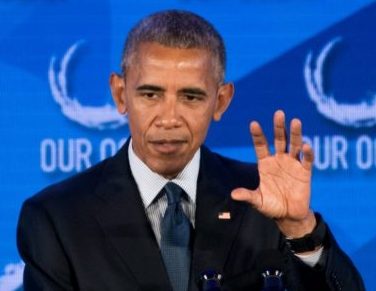 President Obama’s National Ocean Council has approved the nation’s first ocean plans for the Northeast and Mid-Atlantic regions. The plans feature databases about the regions’ marine life and habitats. They’ll inform how to plan commercial and recreational activities at sea, while protecting those resources. Grover Fugate, executive director of the Rhode Island Coastal Resources Management Council, said the databases are open to the public. “So people can see the information that’s going into federal decisions and also state decisions,” said Fugate, “but also then to create a more coordinated decision-making process.” “We’re looking to the ocean for clean renewable wind energy as well as tidal and wave energy,” continued Brooks. “The ocean is increasingly supporting aquaculture and gas pipelines and cables. So ocean planning is an effort to get out ahead of the increasing use of our ocean and be proactive about managing it comprehensively based on science and with the best data possible.” Read the rest here 18:14
President Obama’s National Ocean Council has approved the nation’s first ocean plans for the Northeast and Mid-Atlantic regions. The plans feature databases about the regions’ marine life and habitats. They’ll inform how to plan commercial and recreational activities at sea, while protecting those resources. Grover Fugate, executive director of the Rhode Island Coastal Resources Management Council, said the databases are open to the public. “So people can see the information that’s going into federal decisions and also state decisions,” said Fugate, “but also then to create a more coordinated decision-making process.” “We’re looking to the ocean for clean renewable wind energy as well as tidal and wave energy,” continued Brooks. “The ocean is increasingly supporting aquaculture and gas pipelines and cables. So ocean planning is an effort to get out ahead of the increasing use of our ocean and be proactive about managing it comprehensively based on science and with the best data possible.” Read the rest here 18:14
The Great Fish Crisis Fraud
Ever wonder why in the midst of our worldwide financial meltdown crisis, the largest corporations and their CEO’s and their Wall Street cohorts are showing record “earnings”? Crisis is good business…for a few.
How is it that after NOAA scientists, and even National Marine Fisheries Service director, Eric Schwabb, have declared overfishing virtually ended in the majority of our U.S. fisheries, we still have regulations and management programs geared toward solving the fisheries crisis and declarations by aquaculture advocates that the “wild caught” fisheries cannot supply domestic demand for product?
As Naomi Klein points out in The Shock Doctrine: The Rise of Disaster Capitalism, it’s the create-a-crisis strategy. Not that there aren’t plenty of real environmental crises to go around, this idea, however, refers to a strategically created crisis, a sort of NY subway pickpocket’s bump-and-lift type distraction. It’s the “Hey! Look at that over there!!! …all the fish will be extinct in 20 years”, while the “free market environmentalism” pickpockets ply their trade and steal another publicly held natural resource. www.perc.org
Create a crisis mentality as “cover”, and while everyone scampers around putting out imaginary brush fires, move in with a new “regime change”, a new order—a scheme geared to best enhance the perps’ profits.
Crisis >> Distraction >> Install Scam = Great Profit
The crisis is for the people; the profits are for a few corporate entities. The last economic “bubble” and the resulting crisis—and the current push to create a new one using our ocean resources—is simply more of the failed Milton Friedman economics of privatization, commodification, and market-capitalization of everything that has value (and also several things that don’t) scam, or the last 20 years of the “Greed is Good” economic fantasia.
******
It’s the same scam that the collusion between the eco-Frauds and our esteemed government fishery agency is perpetrating on our fishing communities and the fish resource through the “regime change” to a “new order” of management system, called catch shares commodification and consolidation.
From NOAA’s own recent Stock Sustainability Survey: out of the 250 monitored stocks 85% are free from overfishing and no new stocks have been added to the overfishing list. The “Report Text” on the below linked web site also states that from 2000 to 2010 the Fish Stock Sustainability Index increased by over 60%. Cleary stock rebuilding is not yet complete and it needs to continue; but according to NOAA’s own survey, the stocks are well into the process of rebuilding and are projected to continue to improve. See http://www.nmfs.noaa.gov/sfa/statusoffisheries/SOSmain.htm
and Eric Schwabb’s “Mission Accomplished” statement seems to claim it’s their new catch management regime that’s responsible for the success (in one year)—No, Sorry Eric! Try the austere “rebuilding” catch limits fishermen have been under for the last 20 years.
“Notably, the majority of our domestic fish stocks are not subject to overfishing and are not overfished. While we have implemented the measures to end overfishing, 40 stocks will still be listed as subject to overfishing until we can scientifically assess them and update their status, and work remains to rebuild the 48 stocks that are overfished.”
http://www.nmfs.noaa.gov/sfa/statusoffisheries/2010/2010_Report_to_Congress.pdf
Apparently, (according to NOAA scientists and even declared by Eric Schwabb), overfishing is not occurring for the majority of stocks in the US; yet, we still see the claims for an ocean of jellyfish and other dire predictions for the future of our fisheries.
The familiar fishery disaster refrain persists: Fishery Crisis!!!…Overfishing! Overfishing! Depleted Stocks! Destroyed Ocean Habitat! Help! Help! Save the endangered fish species! Donate, Please Hurry! Donate to our NGO, (and uh…roll in the new economic scheme please…quick, before someone notices)
******
Food, energy, real estate, education, war, prisons, potable water, etc., have all been commodified, corporatized, market capitalized, and speculated beyond any actual inherent value, next is fish, and then what…wave energy, air, light???) …you name it, and some government-backed financial genius will steal it, privatize it, put a price on it, inflate its value, and make a great profit from brokering or trading it–and to Hell with anyone who might starve as a consequence. Create a crisis, move in with a “new system” that’ll save the day (and coincidently will set you up to sit back and collect some rent and commissions from the transactions of whatever scraps are left—some people are just lucky that way, or perhaps former government bureaucrats who just happened to be at the “right place at the right time”).
Below is a slick World Bank Power Point account of the “rent collection” strategy for the world fisheries. This “Sunken Billions” study was presented to the UN’s world fisheries organization Profish at a conference in South America, 2009. The study concluded that the world’s fisheries were “inefficient” and this causes a “rent drain” for the governments involved. Their solution was to consolidate all the “over-capacitized” and “inefficient” artisan small boat fisheries, and commodify the fish in order to facilitate the collection of some of the “sunken billions”; but certainly not for the “inefficient”, yet somehow, greedy and economically destructive itinerant fishermen. http://www.unep.ch/etb/events/Ecuador%20Symposium%20July%202009/presentations/Kelleher%20Sunken%20Billions%20for%20WWF1.pdf
As if fishing businesses weren’t strapped enough already, fishermen now have to pay a price for fish not yet caught or sold, so far to another fisherman, but soon to a “permit bank” or “community organization”, and then perhaps directly to an NGO or hedge fund manager. Now apparently add another “Vig” for some scheister who sets up a website and collects a toll or “rent” on fish quota trading, coming and going. And this will “increase profitability” for whom …the fishermen???
Here’s an article from Saving Seafood, it points to the beginning of such usury in the fisheries.
We also now have an exchange traded equities fund for fish companies, Global X Funds’ (FISN) that tracks the equity market performance of global companies involved in the fishing industry.
There is No Fish Stock Crisis. The Fish Crisis is the set up for this dirty financial joke, and the gottcha’ punch line is …catch shares commodification for everyone.
The reason that the EDF/NOAA “overfishing crisis” decrees make no sense to anyone who does not have an agenda-driven perspective (i.e., a dirty financial joke in mind) is because the “crisis” is not based on any reality other than the “create-a-crisis” strategy (and the perpetrators of the joke will slide in the catch shares commodification of the fish—and they’ll all make a bundle).
Or go right to the Milken Institute event and listen to David Festa of EDF:
http://www.milkeninstitute.org/events/gcprogram.taf?function=detail&EvID=1599&eventid=GC09
******
When scientists, who are not perpetrating the create-a-crisis-then-privatize-everything-for-profit con game, speak about the fish stocks, they present an assessment picture without any overfishing crisis mentioned.
Below are links to articles from two renowned fisheries scientists and research and analysis from Nils Stolpe, a trusted fisheries consultant, all who debunk the fish stock crisis mentality.
Here is Brian Rothschild’s paper on “The Overfishing Metaphor”, which was posted on Saving Seafood, April 10, 2011 (http://www.savingseafood.org/science/paper-by-umass-brian-rothschild-says-overfishing-is-more-metaphor-than-scientific-me-2.html);
And Ray Hilborn’s article “Let Us Eat Fish”, on the health and status of the fisheries in the NY Times, April 14, 2011, http://www.nytimes.com/2011/04/15/opinion/15hilborn.html?_r=2
From Nils Stolpe a long time respected fisheries analyst, researcher, and consultant: http://www.fishnet-usa.com/chronic_underfishing.htm
These are statements by well known and respected fishery authorities, honest and sober voices in the “dead sea” of fisheries misinformation.
There is no Fish Crisis! But, a crisis is needed in order for government agencies, acting in collusion with big industry’s “free-market environmentalist” NGO’s, to pull off one of the greatest resource thefts ever. They need the cover in order to consolidate the fishing industry and commodify the fish resource for a few catcher processor “factory ships”—setting the stage to turn the rest of the ocean over to the energy industry.
The fish are doing fine. However, there is an actual Crisis of Fish Management created by the new catch shares scam. It is pouring gasoline on the country’s already distastrous economic ordeal.
And all this just to install a new economic bubble machine!
Crisis >> Distraction >> Install Scam = Great Profit
(Credit to Naomi Klein whose non-fiction work The Shock Doctrine: The Rise of Disaster Capitalism contains many of the ideas and the inspiration for the Crisis Formulation cited above. — http://www.naomiklein.org/shock-doctrine/the-book )
(The Global X Fund information thanks to “ish2dant’s” seeding article to newsvine)
NOAA Fisheries Names Doug Lipton Senior Research Economist – Nice! Another Enviro-Capitalist—just what we need.
Read the full story on the NOAA website Since NOAA pretty much finished off most New England fishing based on disgracefully shoddy science at the Portsmouth council meeting last week, it appears that people are waking up and wondering what’s behind all of this obvious hostility towards the fishing industry. How could our own government be so hell-bent on eliminating traditional coastal family fishing operations that have supplied millions of pounds of the cleanest food on the planet for over 400 years?
Why do we seem to be up against not only the Commerce Dept. (which is really about international trade), but apparently the Dept. of Interior (Minerals Management Service: Wind, Oil/Gas and Metals) and the Energy Dept., as well (you didn’t think the Way-Too-Bigelow was really built for fish surveys did you? Try deep ocean exploration for rare-earth metals and other minerals like oil and gas).
Why is this happening? Who are the Enviro-Capitalists? How did they come to power? (And if you don’t think they’re in power, listen to the directives from Conservation Law Foundation and Environmental Defense Fund representatives at the Portsmouth meeting’s public comments regarding Habitat Closed Areas.)
THE WHY
Let’s face it, there are trillions of dollars right off of our shores. Some of it is swimming around, feeding and spawning; but most of the potential profit is either in energy buried way beneath the sea floor; or some of the money is “Blowin’ in The Wind”; and some might be from harnessing the motion of the ocean from the “Cradle Endlessly Rocking” (wave energy capture).
Regardless of our poetic connections to the sea, big business wants our oceans. They want the oil, gas, and other minerals, the wind and wave energy; some might even want the fish…but only on an industrial scale, please.
Such a business strategy is laid out nicely in the below linked presentation by the World Bank Fisheries Team Leader at a 2009 conference. It makes the case for an economic justification of fisheries governance reform.
Microsoft PowerPoint – Kelleher Sunken Billions for WWF1.pps
Economic justification (or Profit Motive) is exactly the moving force behind the catch shares scheme and the fishing eliminating posture of the regulators. (You didn’t think CLF’s and Pew’s lawyers were really worried about the health of our fish did you?)
But here’s their challenge: how does big business and their “partner” government agencies such as NOAA and their ENGO corporate fronts, such as Environmental Defense Fund and Conservation Law Foundation, Pew, Oceana, etc., get rid of a centuries old small boat fishing tradition and secure the right to take over the continental shelf without looking like all-consuming BLOBS?
They need a strategy to deal with all these pesky “little people” who are littering the beach and fishing from their scows along the coast—squatters and itinerants, part timers, addicts and alcoholics all, according to EDF’s David Festa, Vice Pres. of Finance (in his pitch selling catch shares to Milken Institute investors).
THE HOW: BY SAVING THE OCEANS
If you want to own something first declare it a disaster, then save it, and then drastically alter it—make it your own creation. Name a villain. Strike a pose. Save the day. Claim the spoils. Get rich quick.
The first step was an ecological disaster had to be created or at least simulated in order to open the door for “sweeping management regime change” and the imposition of drastic measures to save the fish resource—a “day of reckoning”, so to speak.
NOAA and her partner Ecological Non-Government Organizations claimed the fish and the ocean habitat were in dire straits (after twenty years of austerity “rebuilding”).
“Well, at the global scale, probably the one thing currently having the most impact is overfishing and destructive fishing gear,” said Jane Lubchenco, former vice chair of EDF and now former head of NOAA, as she compressed into a sound bite her stance on facing the ocean’s problems.
Lubchenco’s statement listing fishing as the primary ocean stressor, while omitting any mention of oil drilling, took place only months before the Deepwater Horizon catastrophe. Through the expansive and very well funded (remember the oil profits are over $40 billion per year) ENGO public relations campaigns during the last few decades, small boat fishermen have been made out to be the villains; while certain oil and financial industry driven environmental organizations, are set up as the heroes …“saving our seas”. They have accomplished a complete role reversal.
Corporate backed NGO’s have, at this point, successfully diverted public attention from the all too real and crucial ecological threats to our oceans, namely, increasing ocean water temperature and acidity, polluted estuaries, disappearing wetlands, and oil and gas drilling and transportation catastrophes.
They’ve commandeered the public’s well-intentioned concern (and donations) and their sincere alarm for the environment and have managed to turn it against local fishermen, effectively painting the coastal small boat fishing industry as a cause célèbre, the perpetrators of the degradation of the oceans.
But who then will save our oceans?
Enter: THE ENVIRO-CAPITALISTS
With a hefty public relations spin, corporate money and influence will operate under the cover of free-market environmentalism saving the oceans (while they rob you blind), or Enviro-Capitalists: Doing Good While Doing Well the title of the “path-breaking” book (just ask him) by Senior Associate Donald Leal and co-author Terry Anderson president of PERC “The Center for Free-Market Environmentalism” www.perc.org. This site is worth looking into as an indication of the level of “thinking” that goes on in this kind of enviro-“Think-Tank”. It’s nothing new; it’s only NOAA/EDF/Wall Street, et al, on their commoditize everything campaign. It’s the “free market environmentalism movement” or the Enviro Capitalists: Doing Good While Doing Well.
That title itself tells the story. The mechanism behind this econo-scam is the private ownership of the shares of a natural resource. Catch shares fisheries management, for example, is an extension of this faulty de-regulated free-market theory of economists such as those in the Milton Friedman school of privatization-is-the-answer, which in this case goes by the name of Free Market Environmentalism. This is the approach of ownership equals responsibility, or render a commodity profitable enough and somehow the good nature of the owners and the “intelligence” of market capitalization will automatically stabilize and sustain that resource or industry. The economic incentive will be a force that improves the resource and the environment. For a natural resource such as a fishery this thinking is based on the following principles:
– Private property rights encourage stewardship of resources
– Market incentives spur individuals to improve environmental quality
– Government controls and subsidies often degrade the environment
– Polluters should be liable for the harm they cause to others
This idea is a farce. If you believe this con, I’ve got a gorgeous Gulf of Mexico I’d like to sell ya’ (in as is condition). Market capital dynamics are based on very short term profit, very very short term these days, with computer generated trading, millions of trades can be made instantaneously, and some $3.2 Trillion of world market capital changes hands every trading day. This is not exactly the environment where the long term stability of a resource would be considered. One only has to look at our esteemed multi-national corporations’ environmental record so far in order to understand why the phrase “Free Market Environmentalism” is a contradiction of terms.
The PERC “institute” was started years ago, a front for usurping publicly held natural resources for private capital fun and profit. Information can be found at www.perc.org , Property and Environment Research Center, a “think tank” located in Bozeman, Montana, which proclaims itself as having …“championed the successful approach [ITQ’s] to eliminating overfishing (see www.ifqsforfisheries.org).”
On the bio page of Terry L. Anderson www.perc.org, Exec Dir of PERC, an economist, see his publications including one of my favorites: Saving wild tigers could mean eating them (move over Monty Python). In this piece of ecological brilliance he proposes that we should farm and eat tigers in order to assure their existence since they are one of the more endangered species (I wonder how much you’d have to pay the wranglers on such a ranch). He also thinks everyone should have an oil well and natural gas fracking in their back yard …literally. It’s only patriotic …the least we can do, and “…the only way to get off foreign oil”. And don’t miss his Should Water be Privatized? Yes —a must read. This is the kind of “thinking” that is influencing our national policy on resources, including our fish?
Read Donald R. Leal’s, PERC’s Dir of Research (an MS in Statistics which more than qualifies him to write treatises on the fisheries) Fencing the Fishery: A Primer on Ending the Race for Fish, this is a cute little PERC booklet (from 2002) and a glossary of almost all the bogus ITQ talking points. Donald works “…in collaboration with the Environmental Defense Foundation and Reason Foundation” —surprise, surprise.
These are your environmental capitalists.
SAME OL’ SAME OL’
Therefore, I am not encouraged when I read from NOAA’s announcement flyer that the new Senior Research Economist, “Dr. Lipton, is an Associate Professor in the Department of Agricultural and Resource Economics at the University of Maryland”, and “…he has been instrumental in developing innovative policies that use economic incentives to drive environmental improvements”.
Read the full story on the NOAA website
From Dr. Lipton’s statement, “I am excited and honored to be appointed NOAA’s first Senior Research Economist” and reading further from the NOAA announcement “…who also noted that economics and social science research are fundamental to maintaining a vital economy and a healthy ecosystem.” (Underlines are mine)
“Supporting the well-being of our coastal communities is one of this agency’s priority missions”,
Dr. Richard Merrick said, NOAA Fisheries Chief Science Advisor, when introducing his new research economist. Really? Supporting the well-being of our coastal communities?
“More generally, I will build on our already outstanding economic and social science research program, and to ensure that research results are used to inform our policies”, said Lipton. “…our already outstanding economic and social research program”?
This after NOAA just put hundreds of New England fishing families out of business and out of their homes?
We have an Enviro-Capitalist at the helm of NOAA Fisheries Socio-Economic Research? Looks like more of the same Catch Shares and Aquaculture Plan—“to end overfishing”.
Unlike Doctor Lipton, I do not feel so “excited and honored” about his appointment.
Leave a comment here






